
Fucus distichus
Rockweed, Popweed, Bladderwrack, Bubble Kelp
First Interaction:
13 June 2021
Interactions and observations from: Gonzales Bay & Harling Point, Strait of Juan de Fuca, B.C., Canada.
Tide: 1.0 foot tide 12:07pm PDT (measured at Oak Bay Tidal Station)
“POP”weed is one of the common names for Fucus distichus – and this Whispering “popped” up and presented itself to Person 2, strongly and spontaneously the morning after exploring nearby beaches well populated with the seaweed. She invited Person 1 to join in and review when she recognized the ‘invitation’ that was being extended by Fucus.
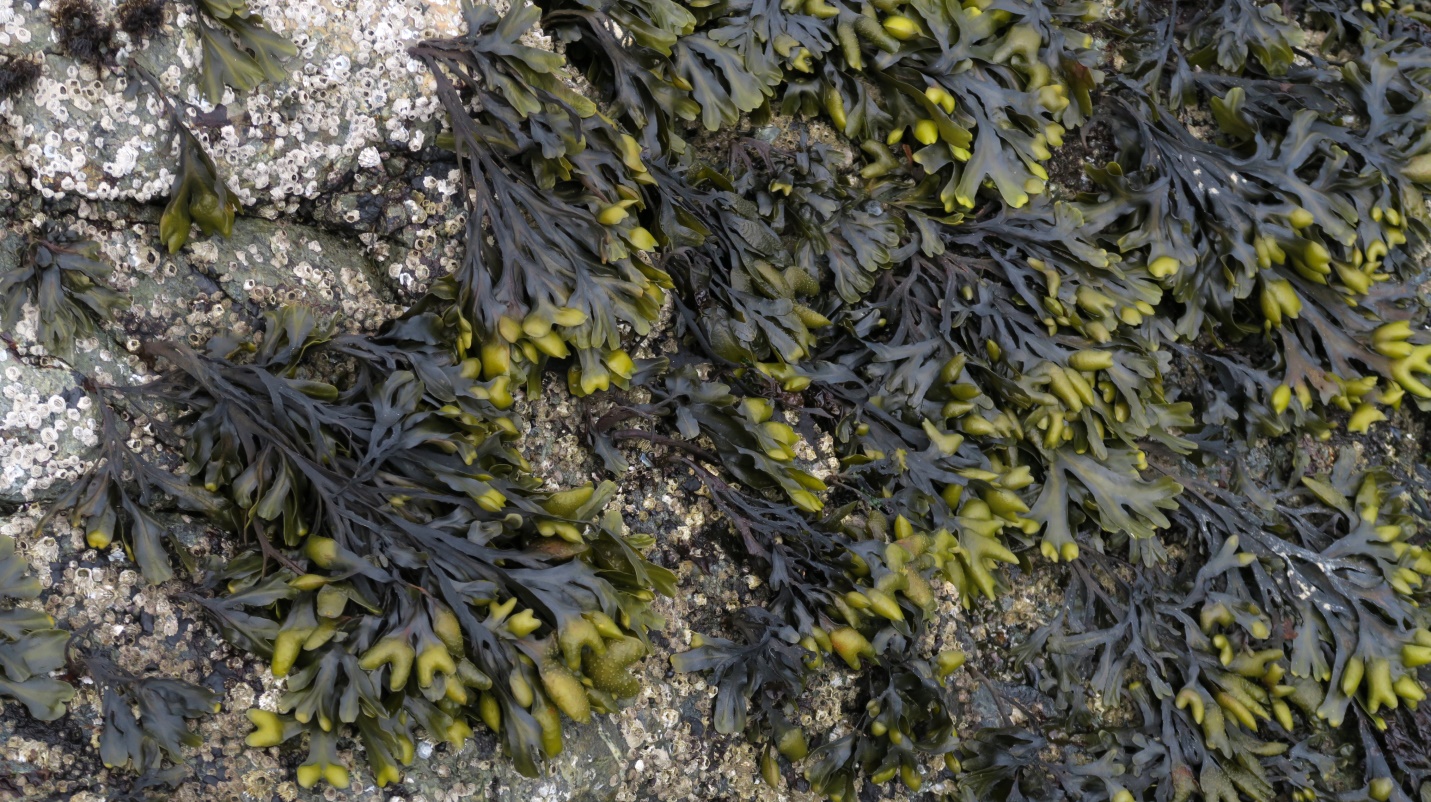
Figure 1: Fucus distichus growing on rocks in the mid to high intertidal zone; its only abundant neighbor here is a healthy crop of barnacles. Gonzales Bay, Juan de Fuca Strait, B.C., Canada. April 28, 2021. Photo ID 27403 ©Seaweedwhisperings.com
Persons 1 & 2:
Always there.
Perhaps also taken for granted that it always will be.
Passed by and encountered early on (and then perhaps forgotten) on the way down to the seashore and any lower intertidal regions.
Encountered, yes, but actually we often walk right on past; so, it can be overlooked whilst one’s sights are set on other things – marine mammals, other showier sea life and even other seaweeds.
Pop, pop, pop – the bladders crush and make a “pop” sound as they are walked on. In this way, you may audibly take notice of Rockweed.
One can go out in search of seaweeds and even have the thought such as, “oh, there’s only Fucus there”, implying some bit of disappointment as in that’s uninteresting, commonplace, and nothing special.
Overlooked despite being right in front of you and also often being very prolific; Fucus becomes the background, a part of the landscape – yes, maybe it IS the background.
Can grow in some of the highest intertidal areas (and also lower on the shoreline depending on competition), so is then only in view when looking the right direction. When the tide is high, it often IS the near view, and you will notice it as the only or at least the dominant, seaweed presence; Fucus everywhere..., carpeting the rocks, yellow-brown-green textured seaweed everywhere at your feet.
Our past interactions that have informed the points noted thus far have happened in diverse places and over a long period of time (many years); places range from the Atlantic coastline at Labrador and many parts of the British Columbia eastern Pacific coastline including Haida Gwaii and Vancouver Island.
So with Fucus distichus there isn’t the sense that you need to go ‘someplace special’ or even at some ‘special tide’ in order to interact. No, instead it would likely be rather uncommonly ‘special’ to NOT find it in our cold water ocean shorelines here in northern hemisphere of the planet on most shoreline visits.
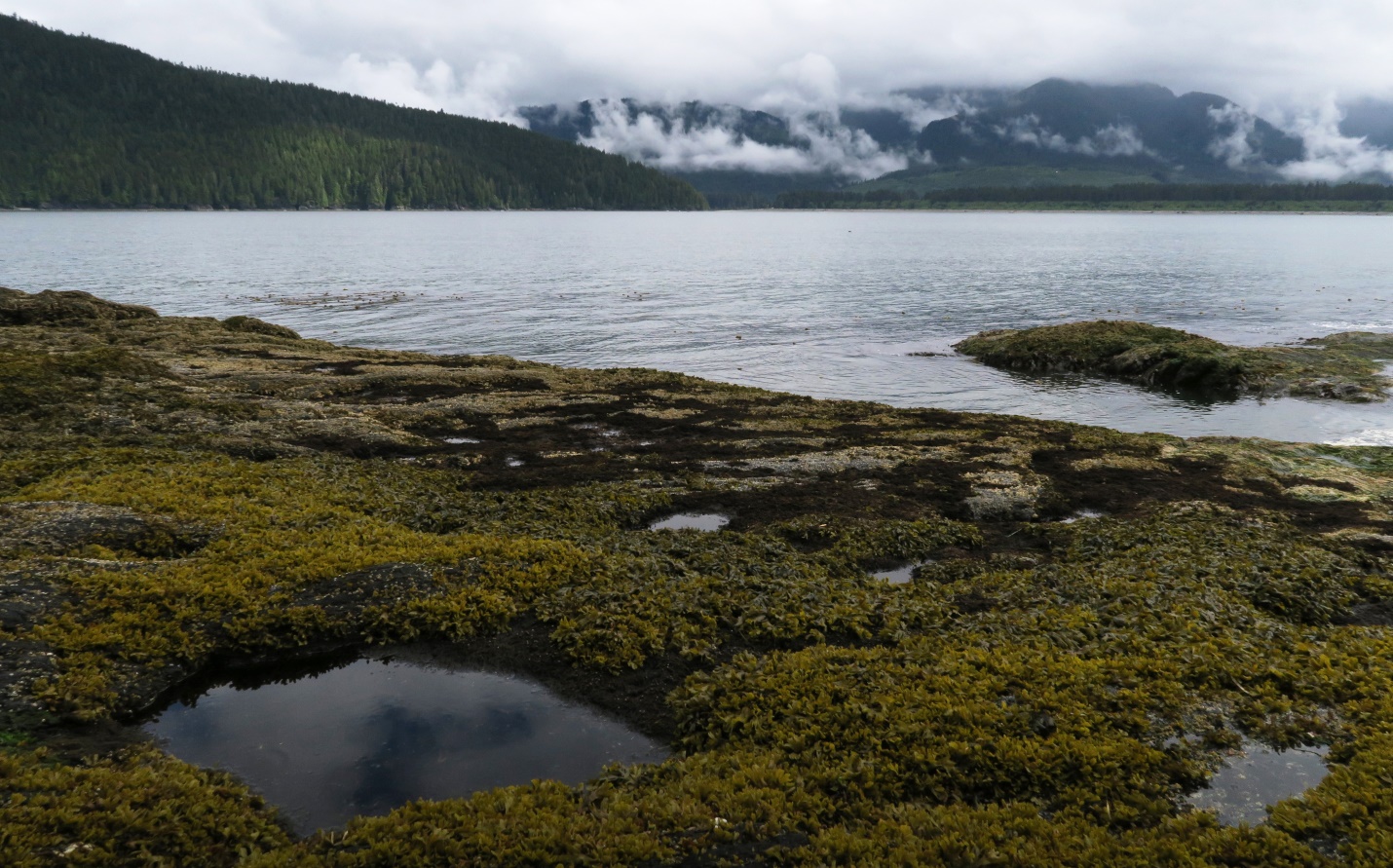
Figure 2: Difficult to overlook here, and also impossible to NOT step on if you are heading to the water’s edge, Fucus distichus is in prime form in the mid and upper reaches of the intertidal zone. Port San Juan, Juan de Fuca Strait, B.C., Canada. June 10, 2020. Photo ID 27404 ©Seaweedwhisperings.com
Fucus distichus has a strong quality that it shares with another brown alga, that being the kelp species of Macrocystis pyrifera – and this is the quality of “it IS the background”.
With Macrocystis it’s like the expression “can’t see the forest for the trees” – Macrocystis doesn’t blend into the background, it IS the background. Underwater in the subtidal zone it creates the seaweed ‘forest’ canopy that is the “habitat” for so much other marine life.
Likewise, Fucus distichus “IS the background” higher up and closer to the rocky substrate of in the intertidal zone.
Seaweed experts teach that marine macro algae are divided into three color groups, and certain colors are associated with certain intertidal zones.
The highest supra tidal zone has a black band of marine lichen.
The first actual seaweed zone is the next one and it is the “GOLDEN BROWN band” of the high to mid intertidal zones. Fucus distichus or ‘Rockweed’ is THE most common seaweed in this zone in the northern Pacific.
The other bands are:
A GREEN band in the mid to low intertidal; this often indicates sites of recent disturbance where quickly growing green seaweeds can thrive.
A matrix of RED seaweeds typically forms in the low intertidal.
Understory kelps, including Macrocystis, form a BROWN band from the low intertidal into the subtidal zone. The subtidal zone may have extensive beds of canopy kelps or eelgrass depending on the substrate and exposure.
From the phycology facts summarized above, we wondered if there would be a notable “IS the background” green and red seaweed algae…, but from our experience as it exists so far, we can’t see obvious choices for that which would fit in widespread regions. It may be true, though, that for the ‘browns’ Fucus and Macrocystis ARE the background species and also the habitat-creating species; each in their two very different tidal zones, one high up on the shore near to terrestrial plant life and the other partly deeply submerged and partly floating offshore.
It is interesting to note that subsequent reading confirmed that Rockweed forms a “short canopy” that protects other algae and invertebrates from both severe wave action and desiccation damage.
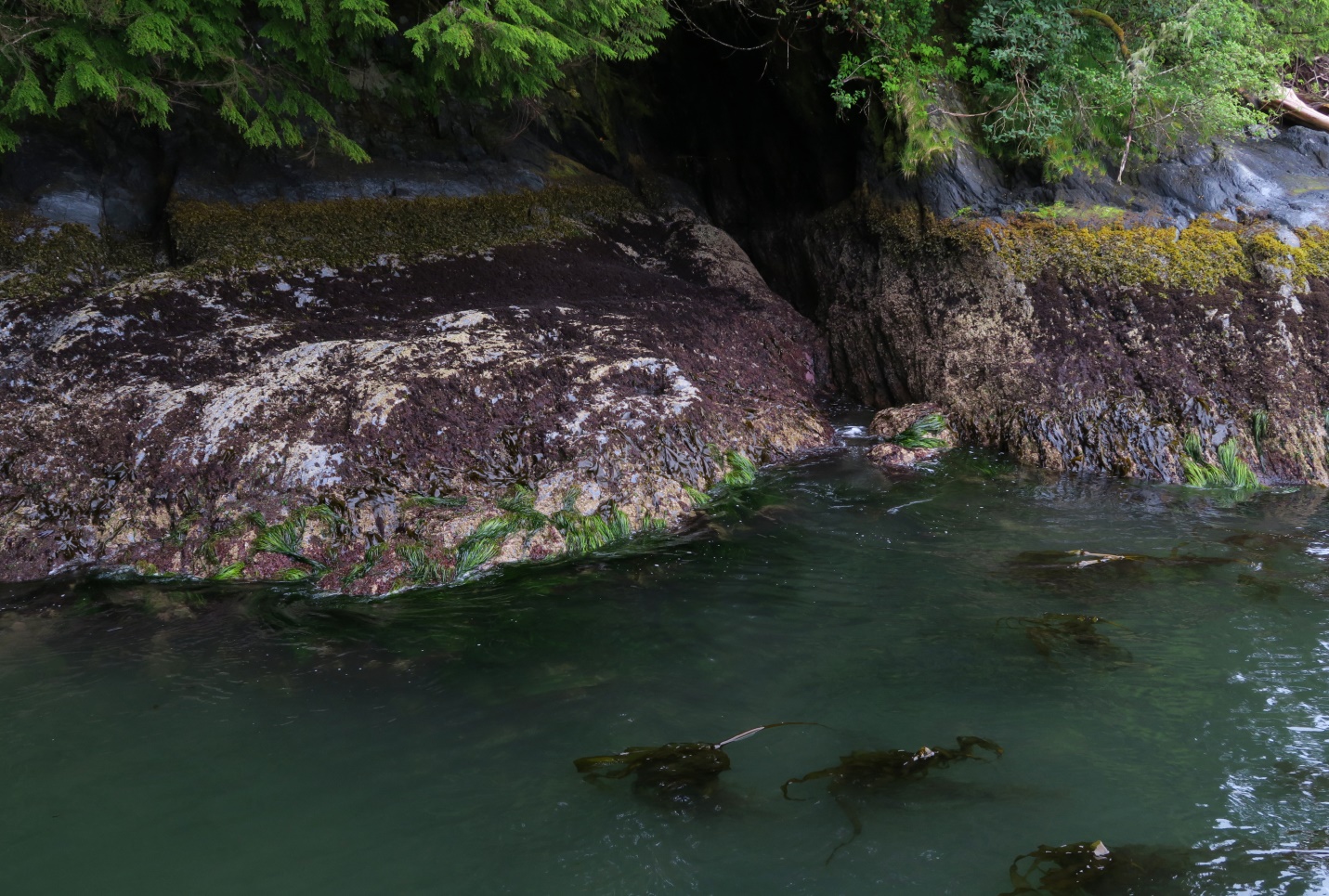
Figure 3: The ‘colored’ bands of seaweed are visible on this rocky shoreline, and highest up, the thick band of golden olive-green is the Fucus band. Below is a thick dark brown band of Black Pine seaweed, and the lower down are a collection of leafy reds, lower still a few sets of large leaved Sea Cabbage seaweeds, then some bright green seagrasses interspersed with the pinkish red Frilly Turf Weed. Floating in the foreground waters we return to the ‘browns’ once more with Bull Kelp. Port San Juan, Juan de Fuca Strait, B.C., Canada. June 10, 2020. Photo ID 27405 ©Seaweedwhisperings.com
Second Interaction:
25 June 2021, (start time 11:00am PDT)
Point Holmes, Strait of Georgia, B.C., Canada.
Tide: -0.3 foot tide 12:51pm PDT (measured at Little River Tidal Station)
Conditions: Mostly clear (cloud cover less than 5%), no precipitation, wind NE 15 – 20 km/hr, sea rippled, 24˚C.
Phase of Moon: Waning Gibbous (approx. 23 hours into this phase at time of interaction); (Previous Phase, Full Moon, 24 June 2021 at 11:39am PDT: Next Phase, Third Quarter, 1 July 2021 at 2:10pm PDT.)
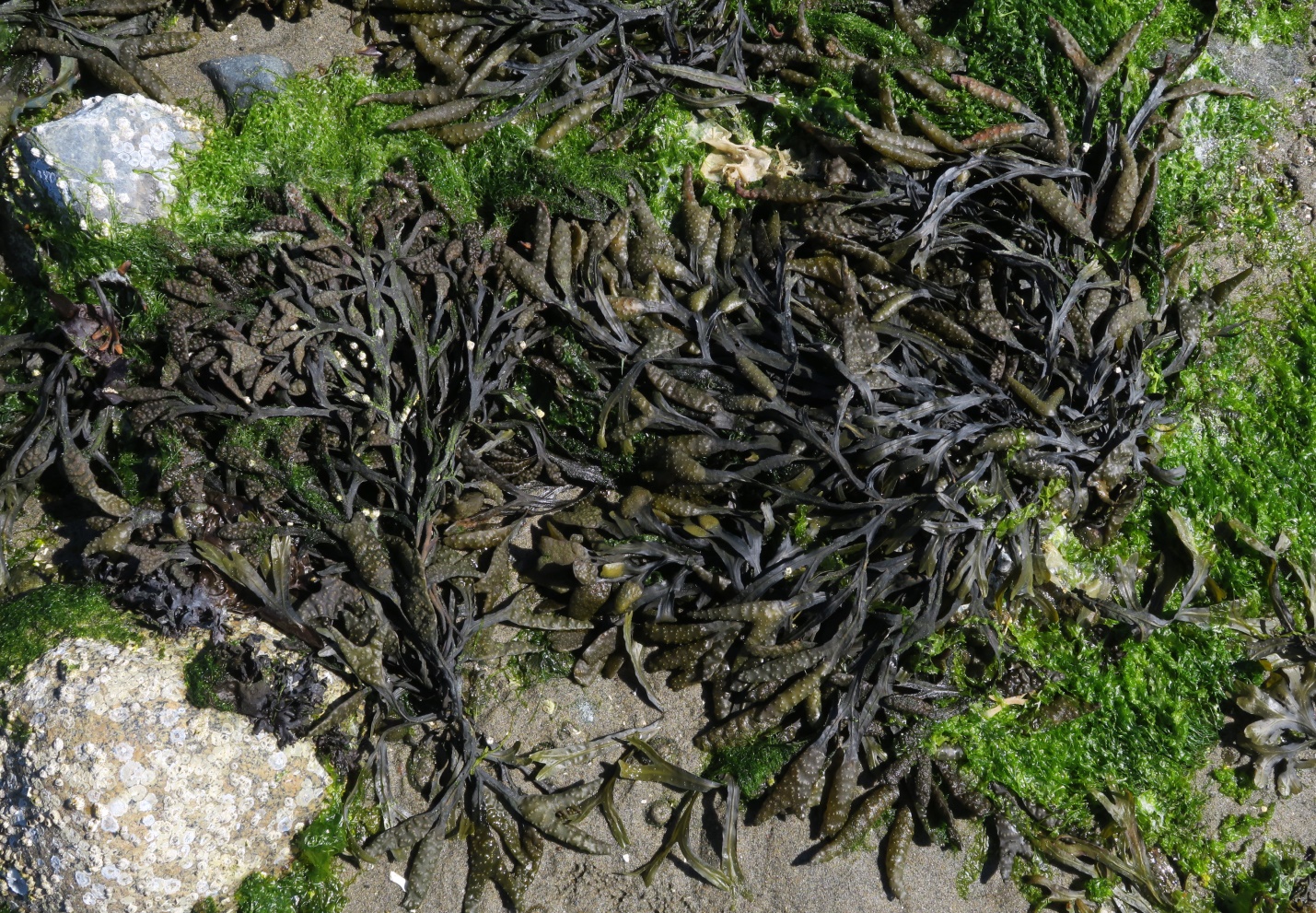
Figure 4: Fucus distichus splayed out on the beach at low tide. Point Holmes, Strait of Georgia, B.C., Canada. June 25, 2021. Photo ID 27406 ©Seaweedwhisperings.com
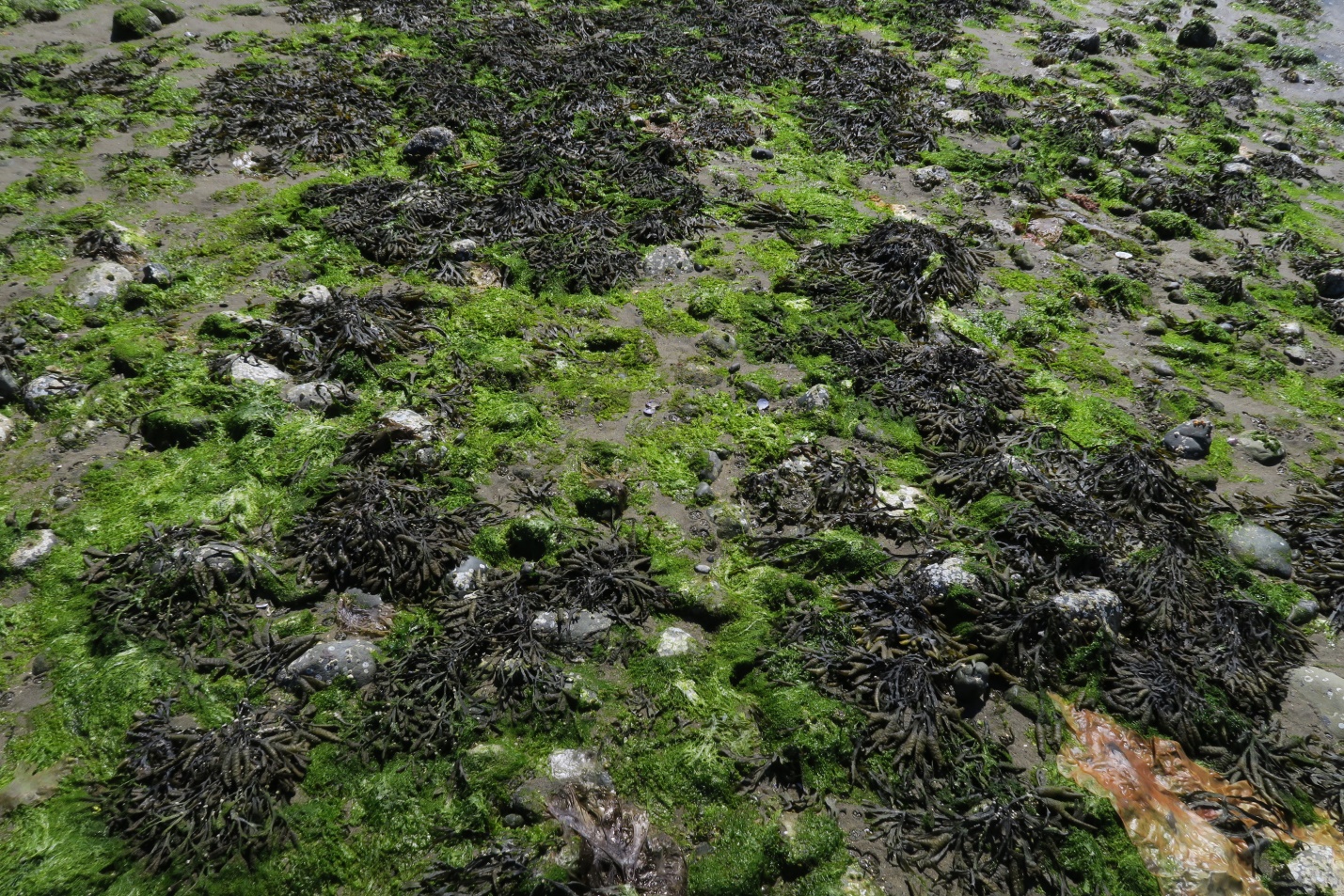
Figure 5: The dark thalli of numerous Fucus distichus algae radiate out from their holdfasts; they are interspersed with sand cobbles and some Ulva species. Point Holmes, Strait of Georgia, B.C., Canada. June 25, 2021. Photo ID 27407 ©Seaweedwhisperings.com
Person 1:
Like other Fucus individuals but at this location they have a darker color and more spreading appearance.
Rough, elongated pneumatocysts (air bladders) – look very much like crab pincers. The pneumatocysts are much lighter green than the rest of the thallus.
I see a forearm, wrist and hand on one of the pneumatocysts (all in lateral view). I drew a sketch of this – I almost never draw anything.
I see another ‘hand’, this one as a dorsal view.
Flopped out on the beach, the thalli lie on top of each other in an orderly fashion.
Very distinct mid-rib on blades provides structure and order.
Very small, almost discoidal holdfast.
Long and slender thalli compared to the more compact thalli of other Fucus distichus seaweed groupings observed elsewhere. We wondered if you were possibly a different species, Silvetia compressa, but no, your distinct midrib distinguishes you as Fucus.
Your dark, purple-y-black thalli punctuate the beachscape in this part of the shoreline.
I notice that my wording in this Whispering is more colorful than usual, not flamboyantly colorful but colorful in order to give more precise descriptions.
Although not totally regular, the blades branch dichotomously multiple times.
Dominate with their rules.
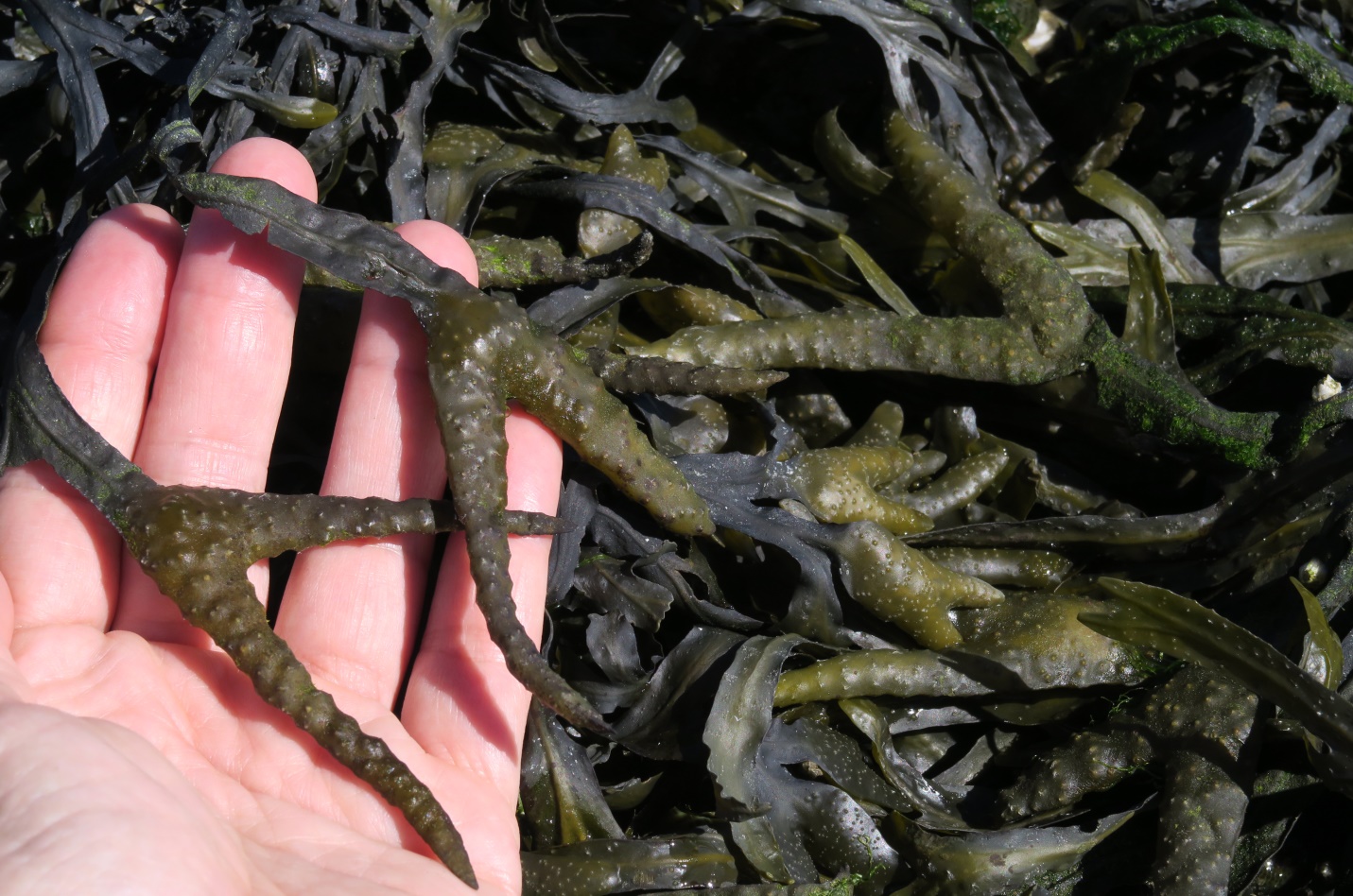
Figure 6: Fucus distichus can present in some truly varied morphology; these long slender and very pointed bladders have a very different look than those of other locations. And while the longer look was prevalent in this location, at the center background of this photo there is also visible a pair of more ‘typically’ shaped bladders. Point Holmes, Strait of Georgia, B.C., Canada. June 25, 2021. Photo ID 27408 ©Seaweedwhisperings.com
Person 2:
Longish, darkened to almost black thalli splay out over the cobble and sand beach.
The thalli branch and at the end of the branches an inflated, bumpy, deeply forked bladder exists. These bladders are olive green, two pronged, long and narrow.
Bladders are crude or rough and even somewhat primitive looking.
This species of algae as a whole, though, has “rough and ready” look, the feeling is that it is very efficient.
Yes, efficient! You get to it, Fucus distichus, you get the job done.
No frills. But, always forked – always ends in a divide.
How do you live in harmony with, or proceed beyond, this divide – is that your eternal question?
I don’t think you are easily distracted, though.
No, you can stay on task, on topic, focused on your pursuit. You use organize your efforts and apply yourself in a steady and orderly way.
But as you reach your conclusion it seems that you rob yourself of the “job well done” pat on the back.
This preference for at least two “options” seems to come from your core.
In the seaweed’s morphology we see it in the thalli which reach out in all directions – long, slender thalli, radiating in all directions and that then also branch further, in a dichotomous fashion. And of course, at the terminus of your branches, they always end in a divide, the two prongs, a prominent fork.
You are sturdy.
Tenacious.
Lean and efficient.
Sometimes you can come across as harsh or mean; but I think you’re just blunt and if you speak at all, you use plain, direct and unembellished language. There is no sugar-coating of words from you, Fucus. You see no purpose for that.
You seem focused and not very interested in the activities and opinions of others around you.
This was illustrated by today’s circumstances.
Once such circumstance was a large group of children that were playing nearby and also shrieking and screaming much of the time. At one point the children even mocked a medical emergency, imitating the sounds of an ambulance siren and calling out repeatedly, “CPR, CPR, CPR!” “This person needs CPR!” [CPR = cardiopulmonary resuscitation].
The second significant circumstance that could have pulled our focus away was that on this morning Person 1 was receiving communications about multiple contracts related to his profession and upcoming work contracts, all of which were time sensitive. Answers could not be postponed thus he kept receiving messages while we were on site, something he has not needed to do before during a Whispering.
In spite of these potential interruptions, we were still able to have the “Fucus FOCUS” working for us, and we could get on with our observations and interactions without these outside circumstances proving to any distraction at all. This was notable!
When it comes to sexing, your feel is androgynous – not overtly male or female, perhaps binary – both masculine and feminine. That would certainly fit with your morphology.
The act of sex for you, Fucus distichus, this feels as if it might be like your other actions, efficient, direct, intently focused and possibly concluded with the lingering subtle trace of questioning, “what if….?”
Again, we come to the divided end, the fork, the two prongs, the contemplation of the road not taken, or possibly simply the problem of how to embrace BOTH roads – the dichotomy, the split or contrasting ways of being..., held comfortably in one’s self.
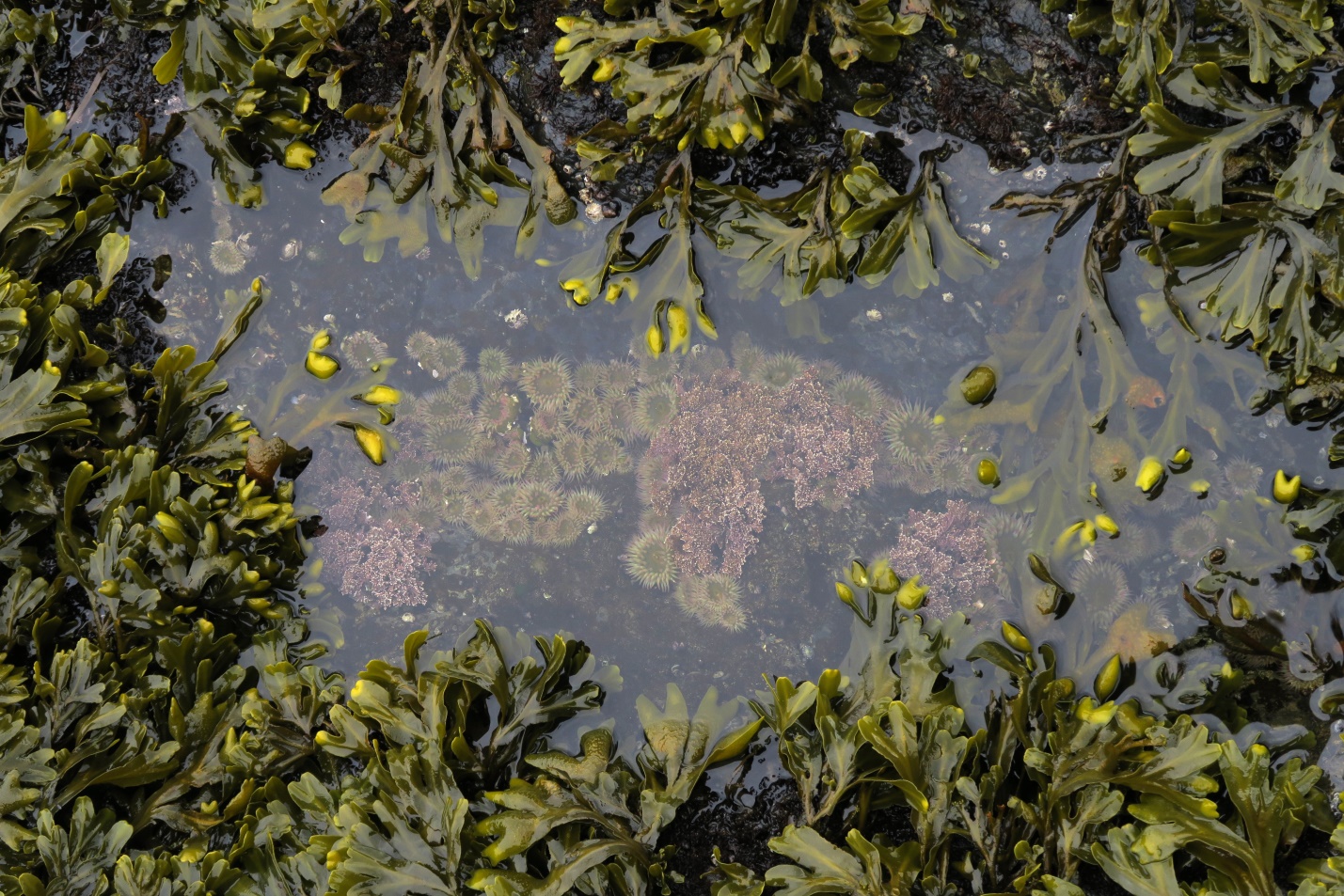
Figure 7: Framing or rimming a tide pool filled with anemones and coralline algae, Rockweed is doing very nicely here, indeed. Some of the tips of the branches are swelling with brighter yellow colored reproductive receptacles, but others are still flat and not yet mature. Harling Point, Juan de Fuca Strait, B.C., Canada. May 4, 2020. Photo ID 27409 ©Seaweedwhisperings.com
Discussion:
For many sea side explorers this seaweed is one they are very familiar with. In regions of the north Pacific and north Atlantic, areas characterized by cold ocean waters, it is difficult to NOT encounter Rockweed in the intertidal regions.
Obvious themes present themselves including: always there, taken for granted, widespread, common, and ubiquitous.
As a result Fucus distichus is often passed by and overlooked and has a significant value to its ecosystem that is often also “unseen” – it forms much habitat and is an important part of the intertidal “background”. We found ourselves drawn to interact with many other seaweed species before we considered doing so with Fucus distichus; so with our own efforts we also passed it by numerous times ourselves.
It seems that Fucus has to assert itself to be ‘noticed’ individually. Indeed this is how Fucus became our focus for the first unplanned Whispering – it declared itself to us. Had it not taken this first step we may well have gone on much longer not yet pausing to specifically acknowledge or ‘listen’ to this seaweed.
As “the background” it is significant and important to other life forms including humans. Author Ole G. Mouritsen in ‘Seaweeds: Edible, Available, and Sustainable’ , draws a conclusion similar to what we experienced when he writes, “Although it is widespread along the coastlines in virtually every part of the world and is possibly one of the more valuable of all the species of seaweeds, it is held in relatively low esteem.” It is nutritionally robust and plentifully abundant – an unsung food source.
Person 1 saw a human “hand” in the morphology of some individuals. Does Fucus lend a hand, shake hands, or reach out to link hands? Are these Rockweed hands ‘waving’ a greeting, or trying to draw attention, spelling out a message in semaphore, or are they busy with some other purpose? Hands, for humans, are invaluable for performing tasks and doing all manner of work. Is the Fucus energy one that enjoys doing and making and creating by hand?
In the efforts Fucus does make, there is a desire to be precise and to proceed with an organized agenda. This works well for them but they can easily seem to ‘dominate’ with their rules and Fucus may then find themselves often alone in their efforts as others don’t find it easy or pleasurable to interact within such structure. Rockweed seems to overlook making space for pleasure and enjoyment as they proceed with their ‘jobs’. Again, they see no reason to sugarcoat their words, either. However, once committed, they can always be counted on to get the job done – and they do it well, efficiently and with focus.
Direct, blunt, unembellished and effective – these traits define the quality of the “Fucus FOCUS” we perceived.

Figure 8: The “golden brown” band of Fucus is plainly evident here on this rocky shoreline; the foreground is just above the waterline and the Rockweed in the background is newly refreshed with the incoming tide. Their bladders ‘lift’ the thalli up and one could think of them ‘waving’ their hands in the current. Snuggery Cove, Juan de Fuca Strait, B.C., Canada. May 27, 2021. Photo ID 27410 ©Seaweedwhisperings.com
Biology & Natural History Information:
Description:
This common brown algae has an olive green to yellow-brown thallus that is composed of flattened, strap like blades with midribs which repeatedly branch more or less equally (dichotomous branching). On mature Rockweed, the terminal branches swell to from forked air bladders that have a distinctive bumpy, warty texture. This seaweed attaches to substrates with a disc-shaped holdfast. It often grows to about 25 cm long, with individuals in protected areas often reaching larger sizes, up to 50 cm, than those on exposed sites. The warty receptacles, tips of mature plants that float when submerged, contain the reproductive cells and are filled with a gelatinous liquid that is rich in alginates and fucoidan; this combination is UV resistant and protects the gametes from sun damage.
It is notable that this species is “extremely phenotypically plastic”, meaning individuals take on a wide variety of forms depending on their habitat. Fucus distichus can assume whatever form suits its environs best and this is possibly one of the reasons it is so widespread.
Habitat:
Often a dominant species, Rockweed is a perennial that can be found in the high to low intertidal of sheltered to semi-exposed shorelines. It can tolerate habitats with low salinity (freshwater), such as estuaries, as well as freezing temperatures.
Distribution:
The range of Fucus distichus extends from the Arctic Ocean, Bearing Sea, and Aleutian Islands, and down the coastlines of Alaska, British Columbia, Washington, and Oregon to central California on the eastern Pacific. It also includes the coastlines of Russia and Japan.
Remarks:
Rockweed forms a short canopy that protects algae and invertebrates from wave action and desiccation during low tide. Periwinkle snails and false limpets graze this seaweed.
Studies have shown that as seawater temperatures increase up to +4˚C above ambient, Rockweed can increase its ability to photosynthesize.
Rockweed is edible; particularly the young tips harvested in spring when they are bright yellow. It is a good source of fiber and is rich in minerals and vitamins plus several essential fatty acids. Many “kelp” tablets and powders on the market as food supplements are made from some species of Fucus, including F. distichus which is not a kelp species at all; so it would seem that Fucus does the work, and kelp receives the credit or the fame.
Phycologists believe that seaweeds belonging to the order Fucales are the ancestral predecessors to kelp.
The life cycle of Fucus and other ‘fucoids’ is unique in the ‘plant’ world in that it closely follows that of animals, where the “vegetative” body directly produces eggs and sperm.
Former name(s): Fucus gardneri and Fucus distichus, once thought to be a distinct species, now appear to be the same species, or possibly a subspecies of the same species. F. distichus was thought to be the common Atlantic species while F. gardneri was applied to the common Pacific species. Now they are usually used as synonyms, though Fucus distichus is preferred. Genetically these two are very similar, but distinct habitat preferences are one argument still presented for keeping Fucus gardneri as the common Pacific Fucus. These scientific nomenclature issues will likely persist and more changes may be seen in the future.
Classification:
Phylum: Ochrophyta
Class: Phaeophyceae
Order: Fucales
Family: Fucaceae
Genus: Fucus
Species: Fucus distichus Linnaeus 1767
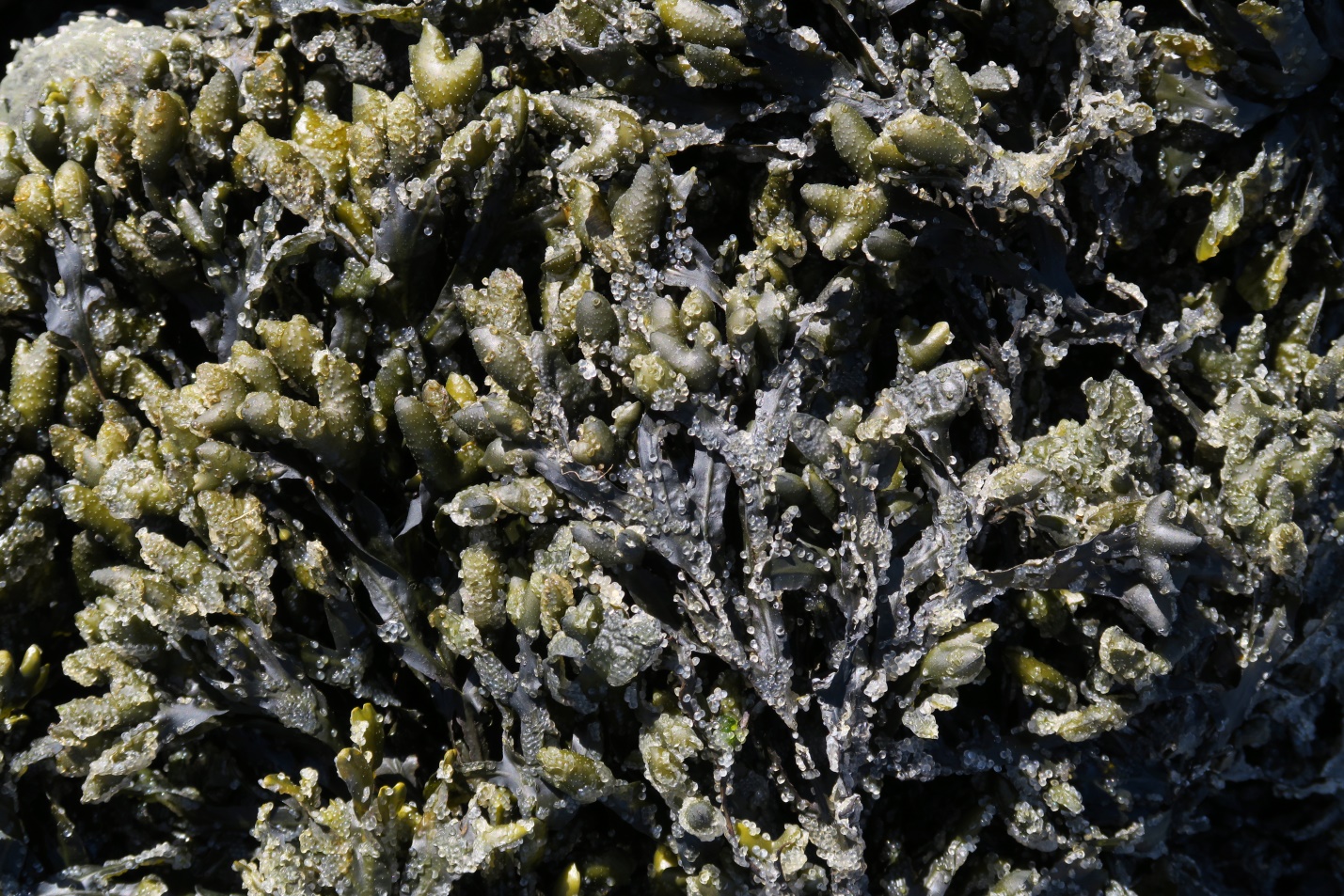
Figure 9: Fucus distichus, as “the background” here is coated with herring roe. Lantzville, Strait of Georgia, B.C., Canada. March 15, 2021. Photo ID 27411 ©Seaweedwhisperings.com
![]()